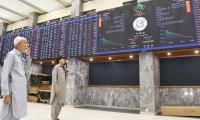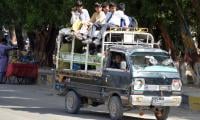The country’s upcoming artists are often found looking for curators who can bring them together without giving a confused outlook of the exhibition.
Opened at Gandhara-Art Gallery, ‘Microcosm’ not only successfully draws budding artists together, but also manages to present the underlining theme – a comment on the changing dynamics observed by the artists individually as well as collectively.
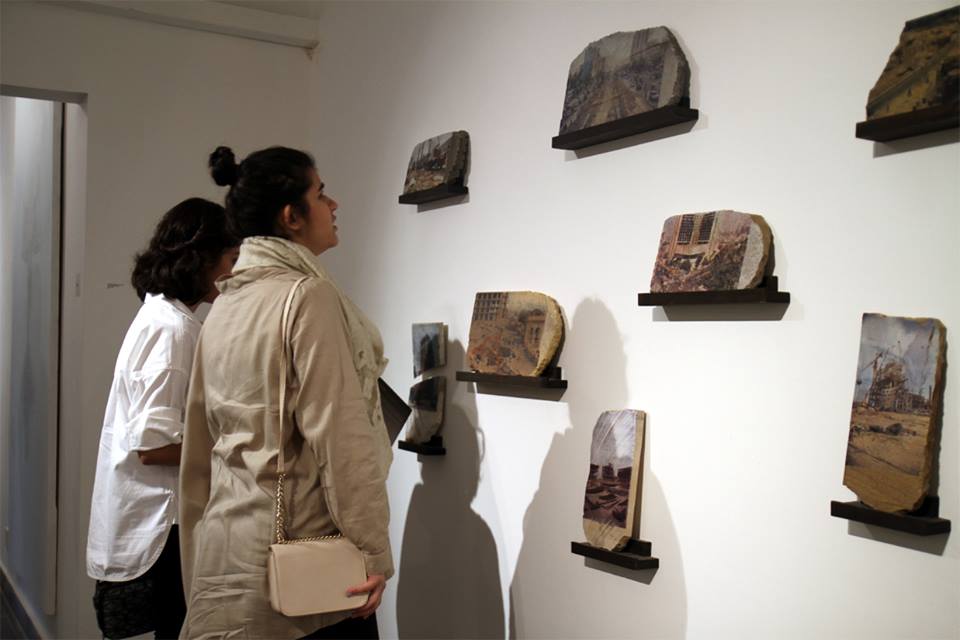
Curator Adeel uz Zafar, who had been following the work of the 13 participants, said he felt that their work’s implication was worth a dialogue. “They have been working for the past three months, and as the show’s titles goes, the reference is to the idea of putting something humungous into a nutshell.”
While there were many admirable works, one that stood out was Haya Zaidi’s ‘Mother is at Work’. It was a remarkable painting showing a skeletal figure of a woman with an umbilical cord attached to her as she tries to pick from a heap while a rat stares at her.

Her practice involves making works which indirectly question the patriarchal society, while also commenting on universal capitalistic rituals, inevitable suffering of the poor, blind conformity tied to a geographical code of conduct, destructive industrialisation and the superior selfishness and righteousness present in human nature.
Artist Razin Rubin of the Indus Valley School of Arts and Architecture (IVSAA) explained that her work comprising old photographs was deeply personal because it was about her own past.
“It’s about my family and past. My parents passed away when I came to the university and my photography is based on this particular incident. The furniture bought by them after their wedding is still kept in my house and I have tried to juxtapose old photos with the current setting,” she said.
A line of portraits across the wall belonged to Amna Rahman of the National College of Arts (NCA), who explained that she painted women whom she held dear.
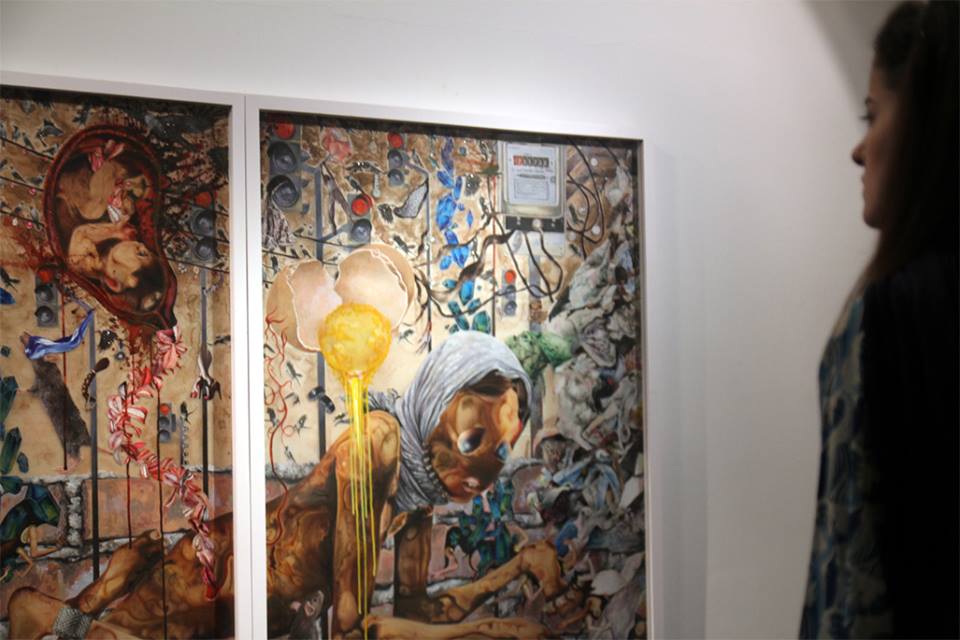
“The basic premise is the concept of associating with one’s gender in terms of emotional dependency or being comfortable. I paint them to give them a tangible outlook.”
Noman Siddiqui’s two art pieces ‘Lollipop’ and ‘Disparity’ were put up across each other with the former aligned on the wall. The piece ‘Disparity’ had several types of dishes on a table with meat placed on them in various sizes. A look from afar had many thinking that it was actually real.
“The dishes vary according to the material with bronze to plastic. The bronze one has the biggest piece of meat with the smallest in plastic. My point is how we all are playing a role in deteriorating the society and not trying to make the most of what we get while constantly blaming those above us,” he explained.
Speaking about the 12 multi-coloured lollipops, he explained that they represented the various distractions artificially created by the state to steer the public away from concrete issues.
Samya Arif’s six digital illustrations depicting feminism accompanied with an audio that was penned by her, were about women who questioned societal norms.
The first one ‘Fast Girls’ was about how any woman who does something considered unacceptable under patriarchy is dubbed as ‘fast’.
“The second ‘Baita’ is about a young girl who wants to get rid of her braid to become a son. The third one is a tribute to Qandeel Baloch and Sabeen Mehmood, both being killed for their views,” Samya said.
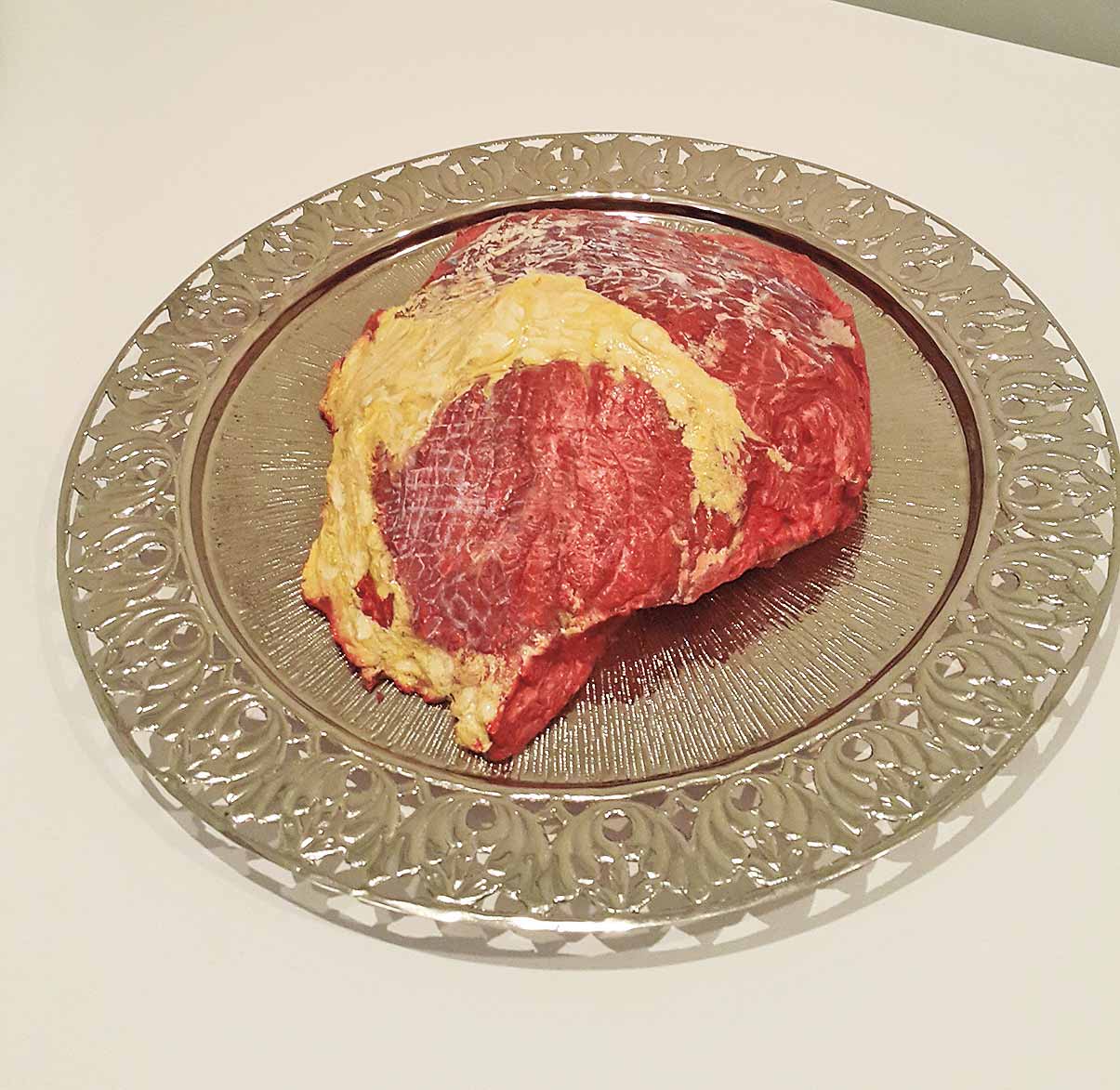
She added that the one displaying the hijaab addresses the stereotypes around the garment, that a woman covering her head doesn’t mean she cannot speak her mind; while the fifth ‘Kitty Party’ is about elitism hindering progressive movements like feminism. The last showed a bride challenging the male ego with a turban under her foot.
Many visitors had huddled around a pong game by Arslan Farooqi, an NCA graduate, which they could play by inserting a coin. “I have altered classic pong game, with Pakistan and India pitted against each other owing to their arch rivalry since the Partition, and it shows how both countries refuse to give up.”
Haider Ali, also a graduate of NCA had two of his works exhibited, both about the city and its infrastructure.
“The first one is a pencil on paper drawing which is a basic medium, and the resulting image belongs to the city we live in. My frame is smaller than the image to give a surreal look to the piece which is actually in line with the cityscape today,” he said. The second one involving stones, depicted the ongoing constructions all across the city. The show continues till August 12.
The image shows a tobacco company worker holding cigarettes. — AFP/FileHYDERABAD: An illegal cigarette factory...
This image shows the dead body. — AFP/FileAn incident unfolded in Quaidabad on Tuesday, resulting in one fatality...
Edhi Marine Services team is busy in a rescue operation in Karachi on March 17, 2024. — PPI An e-taxi driver...
Shah Abdul Latif University Khairpur building can be seen in this image. — Facebook/Shah Abdul Latif University,...
Representational image of a handcuffed man. — Pexels/FileHYDERABAD: A police operation was carried out in Hyderabad,...
A representational image showing a person handcuffed and standing behind bars. — AFP/FileThe SSGC has continued...
